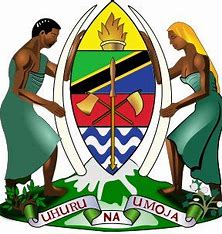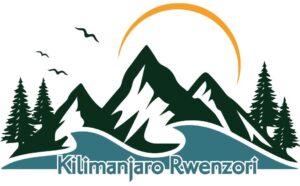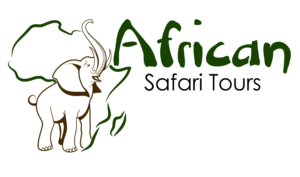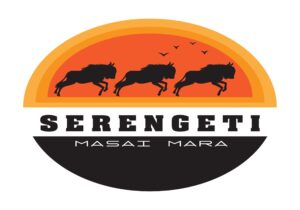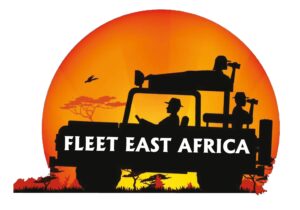Ruaha National Park: A Complete Guide to Tanzania’s Wild Gem
Facts, Location and History of Ruaha NP
Ruaha National Park: Facts, Safaris, Best time, Map & Fees – Ruaha National Park is located in south-central Tanzania, lying west of Iringa town. Also, the Ruaha National Park area is part of the larger Rungwa-Kizigo-Muhesi ecosystem, spanning a vast 45,000 km². Additionally, it covers over 20,000 km², making it Tanzania’s largest national park and one of the largest in all of East Africa.
Ruaha is one of the country’s most stunning and diverse protected areas, which lies along the Great Ruaha River. Rated to stand out because of its dramatic landscapes and dense wildlife populations. In addition, these represent raw, untouched beauty that defines Tanzania’s wild side. This is the Ruaha National Park website page to answer any queries about this destination
History of Ruaha National Park
Ruaha NP was named after the Great Ruaha River, running along its southeastern border and its source of life. This park was established as Ruaha Game Reserve in 1910. Additionally, when time went on, Ruaha Game Reserve was turned into a national park in 1964. So, its name was derived from the Ruaha River, which runs directly through the park. Ruaha NP has grown into a significant park offering a great haven to both wildlife and conservation efforts. As you plan for the Ruaha National Park tour, here are some of the details about this Tanzania National Park that you need to be aware of as you customise your safari itinerary.
How to get to Ruaha NP (Travel Guide)
You can get to Ruaha either by road or by air, depending on your travel preferences, time, and season. Below is what to take note of about the two options.
- The road transport mode to Ruaha is a budget-friendly means of travel to the national park. Although it can be challenging, especially during the rainy seasons due to bad, soggy roads. However, it’s the most commonly used transport mode to the national park. So, it takes approximately 130 km and around 3–4 hours, depending on the road and weather conditions, to get to Ruaha NP by road. Follow the Iringa–Ruaha Road westward via Tungamalenga village, continuing through Idodi.
- Air transport is the fastest way to get to Ruaha in Tanzania, especially for international or luxury travelers. There are Charter Flights Available From Dar es Salaam, Arusha, Dodoma, and Selous/Mikumi (as part of southern circuit safaris in Tanzania). We can customise Ruaha National Park fly-in safaris for you, in case you want to have this high-end or private tour experience in this park.
Ruaha National Park Map
Climate and Weather of Ruaha in Tanzania
Ruaha NP is ranked as one of the top places to visit in Tanzania because of its favourable climate. So, this park experiences a tropical climate that varies slightly with altitude due to its varied altitude (ranging from 750 m to 1,900 m above sea level). The temperatures can rise in the daytime highs around 26–30 °C (79–86 °F), nighttime lows around 12–18 °C (54–64 °F). In contrast, higher zones bordering Ruaha, such as Luhomero Peak of Udzungwa Mountains National Park (which stands at 2,576 meters), can be considerably cooler. Its temperatures drop to around 21°C, particularly in the months of June and July.
And the wet seasons in Selous and Ruaha are the months of November to December, and March to May. So, they have temperatures like: Daytime around 30 °C (86 °F), night temperatures slightly warmer than the dry season. However, Ruaha National Park can get warmer during the hotter months of October and November.
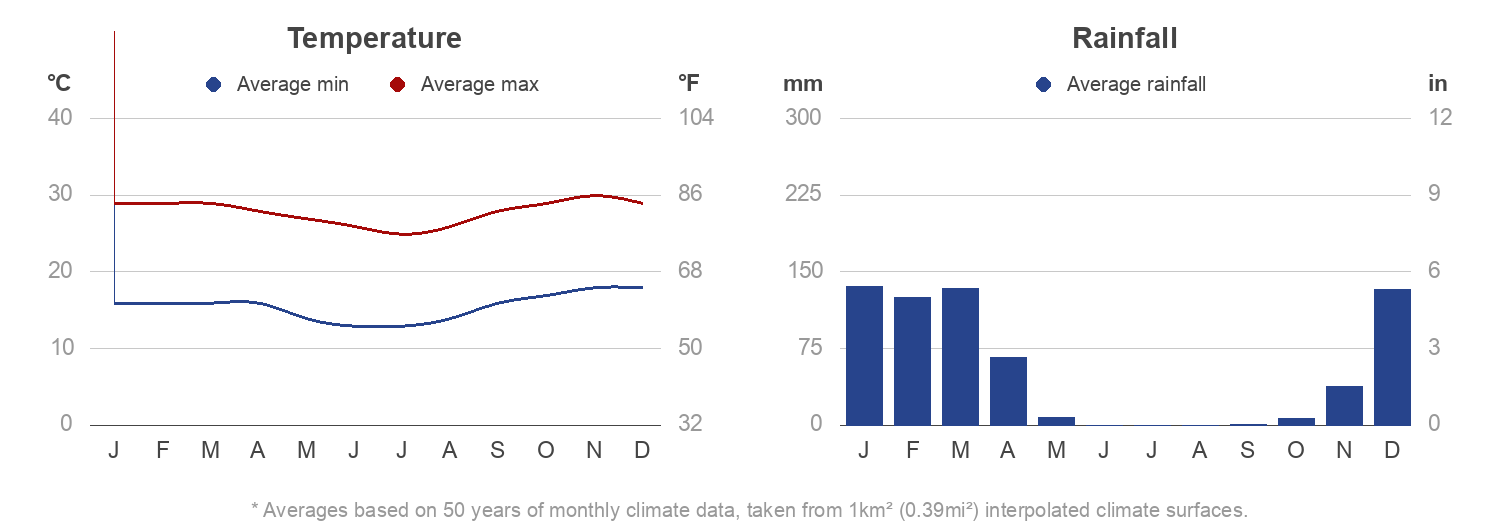
Worst and Best months to go on a Ruaha National Park safari
Ensure you know the best and worst times to enjoy your experiences at Ruaha when planning a safari to this park.
Best Time to Visit Ruaha
The best time to go on a Ruaha National Park tour is during the dry season from June to October. During the dry season, this park becomes one of the top safari places to visit in Tanzania. Below are some of the reasons why the dry season is the best time to visit the national park.
- Better Visibility: There is a great chance and open visibility of wildlife as vegetation across Msembe Plains, Mbagi Valley, and Jongomero Woodlands becomes dry and thin. Hence, making it easier to spot elusive predators such as African wild dogs, cheetahs, and some Tanzanian big 5 cats, the leopards. These are spotted resting under the scattered baobabs or along dry sand rivers like Mwagusi and Mdonya.
- There are higher chances to see numerous wild animals settling around the permanent water sources within the park, like the Great Ruaha River, Mwagusi Sand River, Mdonya River, and Jongomero River. Hence, making it very easy to witness numerous wildlife in known locations.
- Unlike in the wet season, the road conditions in the dry season are more excellent and thrilling to use. These roads include: Msembe–Mwagusi circuit, Mdonya Loop, and Jongomero Track. Also, Ruaha walking safari trails near Mwagusi Camp, Mbagi Ridge, and Ruaha River Lodge are open and safe for foot safaris.
Worst Time to Visit Ruaha NP
The worst months to go for a safari to Ruaha are from March to May. So, these months are for Long Rains, and November–December are for Short Rains. All these months are surely filled with challenges that may make it hard for one to have the best of Tanzania safari at Ruaha because of the following.
- The roads, including the Jongomero–Mbagi routes and the Mwagusi–Ifuguru circuit, are surely very slippery and impassable. Also, sightseers find a great challenge in the Black cotton soils, especially in the lowlands near the Ruaha River floodplains. In addition, these become extremely sticky and trap vehicles easily, hence making it hard to drive through the park.
- Wildlife in Ruaha disperses to areas like Highland plateaus near the Western Escarpment, Remote zones like Ifuguru Woodlands, and Kitisi plains. This is due to plentiful water across the park, and animals no longer need to stay near the Great Ruaha River, which is the main water body found in the park. Hence, making sightseeing tours in Ruaha NP far less predictable.
- Also, some lodges and tented camps, especially in remote areas like Jongomero Camp or Kwihala Camp, close entirely or operate with limited staff in these months.
Wildlife in Ruaha
Ruaha is not only Tanzania’s largest national park, but also one of its most ecologically diverse. When it comes to wildlife within Ruaha National Park, there are a lot of animals to see. As for that case matter, the park is home to roughly 10% of the world’s remaining lion population, and supports over 12,000 elephants. Also, it harbors significant populations of rare antelope species and over 570 bird species. Here are some of the details about these species within this park to be aware of as you plan for a wildlife safari in Tanzania.
Mammals are one of the top things that have made Ruaha Game Reserve and park very famous. So, Ruaha NP is home to animals such as: Elephants, Tanzania Big 5 Cats like: Lions, leopards. Other mammals in Ruaha include cheetahs, African wild dogs, such as; hyenas, jackals, and servals. Other mammals which are herbivorous include: zebras, giraffes, greater and lesser kudus, sable antelopes, roan antelopes, elands, impalas, and more.
Birds: Ruaha is surely a birder’s paradise in Tanzania, with evidence from recordings. So, this park boasts over 570 bird species, including a mix of migratory and resident species. It has bird species including Fish Eagle, African Skimmer, Malachite Kingfisher, Yellow-billed Stork, and Goliath Heron. Other popular bird species in Ruaha are the Crested Barbet, Yellow-collared Lovebird, Southern Ground Hornbill, Dickinson’s Kestrel, Arnot’s Chat, and Ruaha Red-billed Hornbill. Hence, Ruaha is a haven for birders in Africa.
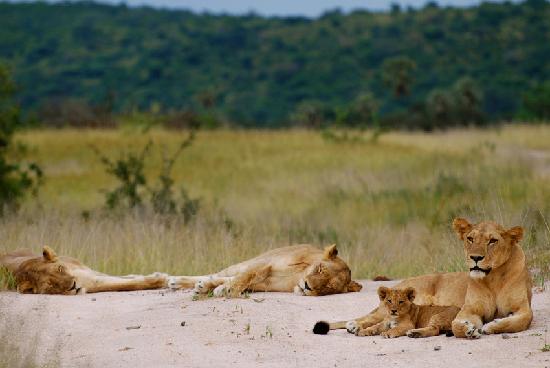
Top Attractions in Ruaha National Park Tanzania
This Tanzania park is filled with various tourist attractions even before you get to the wildlife.So, it offers stunning landscapes ranging from dry riverbeds to lush forests. Highlights of the Great Ruaha River serve as the major attraction for both wildlife and visitors. In addition to the Ruaha River there are other attractions such as
- The Mdonya River
- Open grasslands
- Miombo woodlands
- and riverine forests.
Activities and Things to in Ruaha NP
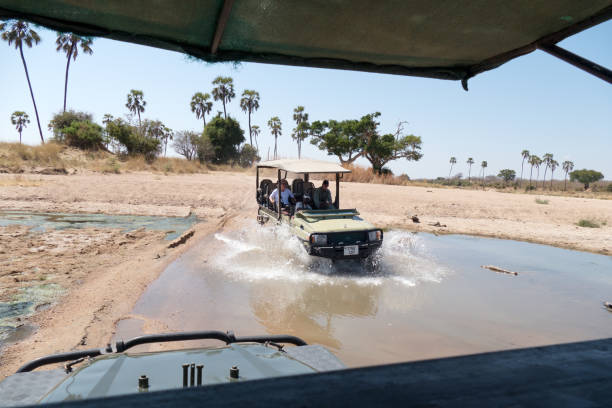
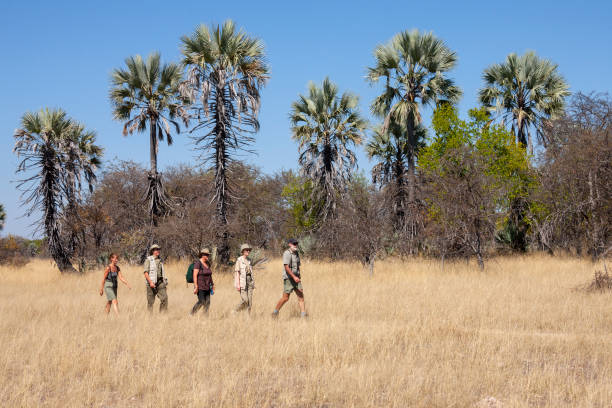
To fully experience the magic of Ruaha National Park, engage in a range of safari activities. So, these things to do in Ruaha permit you to explore both the diverse ecosystems and the cultural richness of the region. These activities may include birding, nature walks, or even game drives within the park.
1. Game Drives:
This is the most famous safari activity carried out in Ruaha NP. Sightseers are driven within the national park in open-roof 4×4 vehicles in Tanzania led by professional guides. These game drives lead to areas such as the Great Ruaha River Area (Eastern Ruaha), the Msembe Area (near Park HQ), and the Jongomero Area (southern Ruaha). Also, game drives in Ruaha are best done in the Dry season (June to October). Effortlessly spot animals such as Elephants, lions, bushbuck, and more that congregate at water sources and the open fields.
2. Ruaha Walking Safaris:
Trails such as Msembe Trails (near Mwagusi River) and Jongomero Trails (southern sector) are the most popular walking trails in Ruaha. These trails offer a raw and immersive bush experience, allowing visitors to connect deeply with the ecosystem. Also, get a chance to witness smaller species like rock hyraxes, mongoose, and reptiles up close.
3. Bird Watching in Ruaha
This park is a birding hotspot and one of the top birding destinations in Tanzania. Ruaha NP has a very unique mix of East and Southern African bird species, plus migrants from Europe and Asia. So, for visitors who are bird lovers, they can visit areas along the Great Ruaha River & Mwagusi River. Also, the Miombo Woodlands and Baobab Forests (Msembe to Jongomero) and Dry Hills and Escarpments (Western Ruaha).
All these birding spots allow them to spot bird species such as Fish Eagle, African Skimmer, and Malachite Kingfisher. Note: This Ruaha birding activity is best carried out in the months of November to April (wet season). So, it’s a Peak time for migratory birds from the Palearctic (Europe and Asia).
4. Cultural Tours (Outside the Park):
Sightseers can also engage in cultural tours outside Ruaha National Park. Visit nearby communities near Iringa Town and in villages like Idodi, plus Tungamalengwa. These offer a chance to understand the human culture intertwined with the land. Have the chance to meet Hehe Tribe, local Markets & Craft Centers such as Tungamalenga Village, and Historical Sites like Chief Mkwawa’s Museum. The latter was dedicated to the legendary Hehe leader who resisted German colonial forces in the late 19th century.
Where to Stay in Ruaha National Park (Accommodation Options in Ruaha)
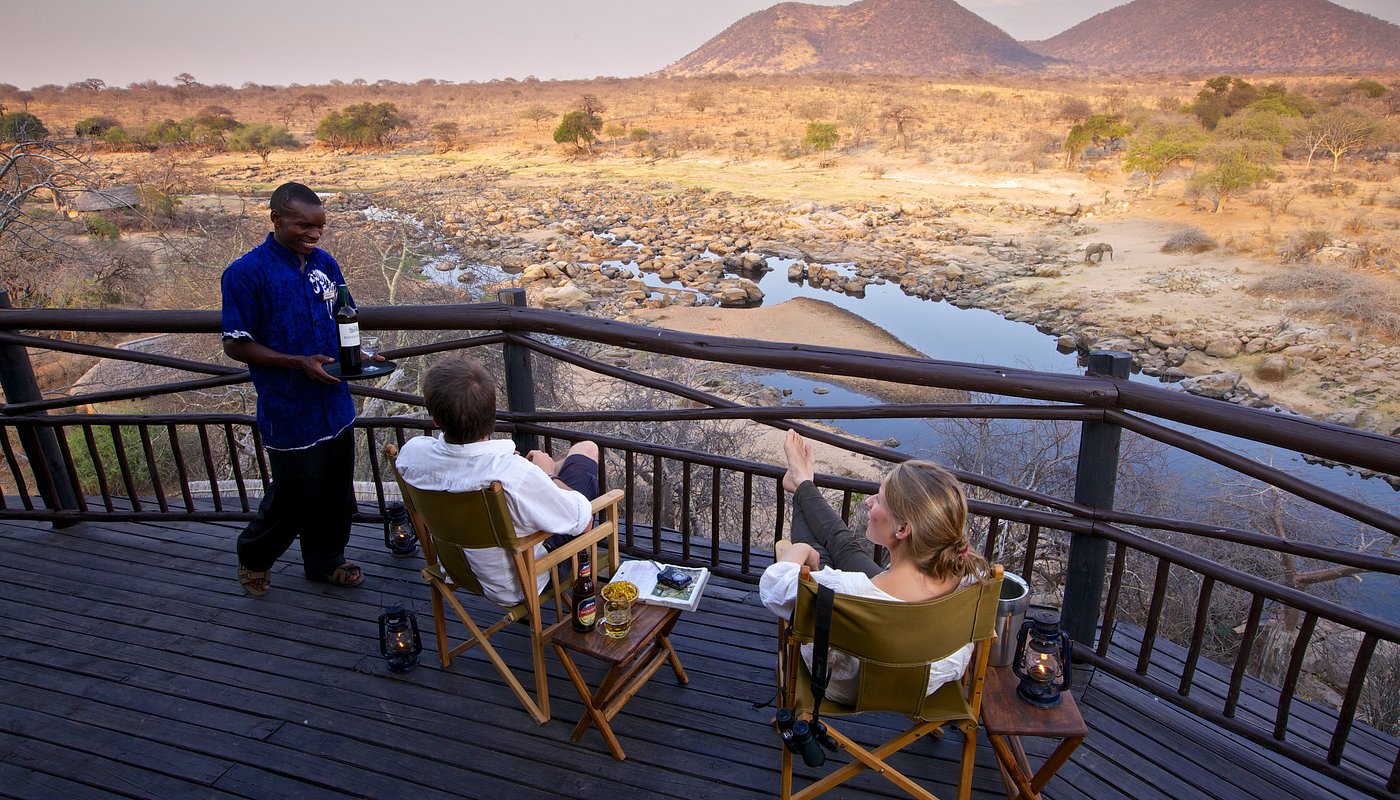
Ruaha NP offers various accommodation options with different budgets ranging from luxury lodges to budget campsites. Below are some of these accommodation choices to opt for.
Luxury / Mid-Range Lodges in Ruaha:
These luxury and mid-range lodges are excellent for sightseers under a luxury budget level while on a Ruaha safari. These luxury and midranfe lodges offer great services to all the visitors and they include;
- Jongomero Camp
- Ruaha River Lodge
- Ikuka Safari Camp
- Mwagusi Safari Camp
Budget Options / Camping:
For all those that are under a stiff budget, there’re cheap Tanzania lodges in Ruaha that are excellent for this budget. Also, they offer excellent services at a budget level to all the sightseers the national park.
Entry Gates to this park
Ruaha NP has two main entry gates situated in different directions of the park. Hence, this makes it even easier to access. Below is what they are and what to keep note about them.
- Main Gate (Msembe Gate): This is the main gate to this park located in the Eastern side, near Msembe Park Headquarters. The nearby facilities Available at its gate in Ruaha include the Ranger station, information desk, small shop, and fuel (limited availability).
- Iwondo Gate: This gate found in the South-east of Ruaha. So, it is an alternative access for those coming from remote villages or combining itineraries with Rungwa Game Reserve.
Important Entry Information: These are some of the important details to keep in mind as you opt to have a Ruaha safari. Additionally, these will help you to keep it together while at the park,
- Park Hours: 06:00 AM to 06:00 PM (Entry or exit not permitted outside these hours).
- Permit Requirement: All visitors must pay park fees (daily rate) upon entry.
- Payments: Usually handled through tour operators (Tanzania National Parks) in advance, or can be paid at the gate (card preferred).
Ruaha National Park Tour Cost: Entry Fees for Adults, Children
While on an African trip to Ruaha game reserve and park, it is key to keep in mind about its park entry fees. Also, mind about the other basic fees which help out in the maintenance of the park by TANAPA. These Ruaha park fees vary depending on the season and category of visitors as below;
- Non-resident adult entry fee: Approx. $30–50 per day
- Children & residents: Reduced fees (e.g., $15–25 depending on age and citizenship)
- Other costs include vehicle fees, camping fees, and guide fees for specialized tours (e.g., walking safaris)
Our affordable luxury Ruaha National Park Safari Packages
Book and customise your Tanzania safari to Ruaha with us. Our affordable luxury Ruaha Safari Packages aim to provide you with the ultimate experience for this destination.
